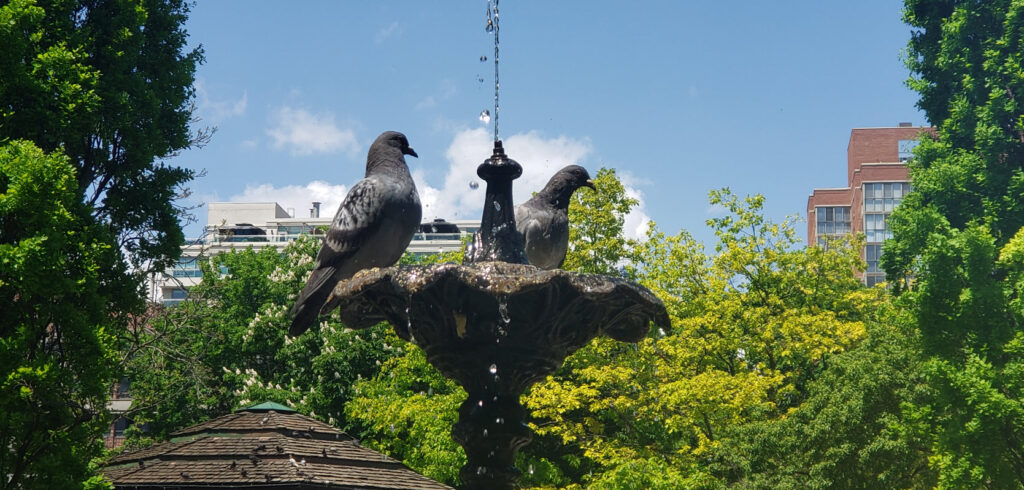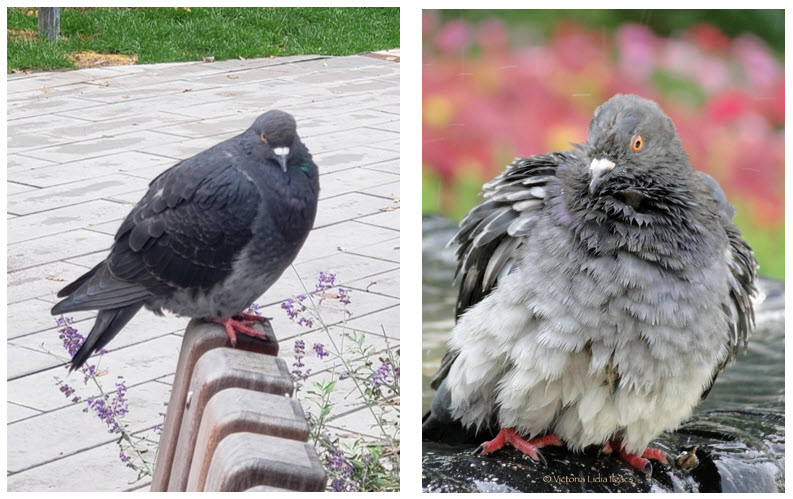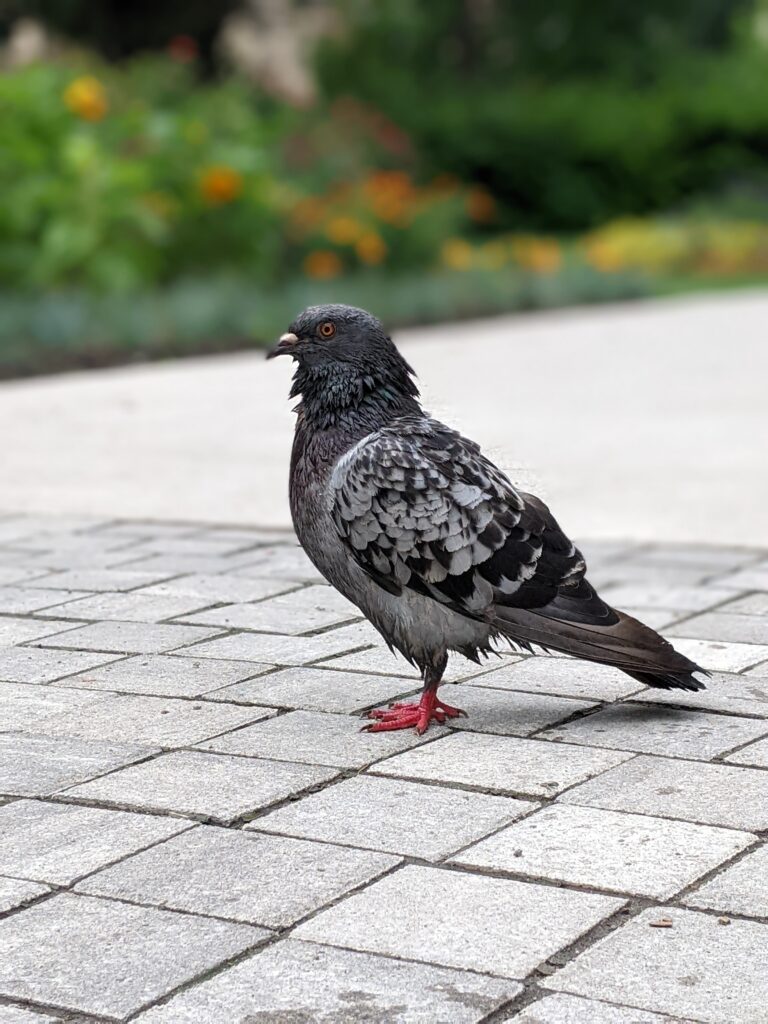The book A Pocket Guide to Pigeon Watching by Rosemary Mosco is designed to change how you think about pigeons. Whether you love them, hate them, or are just plain ambivalent about pigeons, “getting to know the world’s most misunderstood bird” (the subtitle of the book) might turn you into a bird watcher—the next time you find yourself sitting on a bench next to the fountain in St. James Park.

What we know as the pigeon is one of many species in a big pigeon family that comes in all sorts of breeds and colours.
Pigeons were originally domesticated for their meat in a region of the Middle East known as Fertile Crescent. On this continent, they were also an abundant source of nourishment for The Seneca people, and they named them jah’gowa, or “big bread”. Pigeons were then bred to serve all sorts of purposes.
They became a symbol of wealth; only aristocrats were allowed to own them. Royals from France to Iran to India became pigeon obsessed, building elaborate nesting homes, called dovecotes, for their flocks.

(Left) a dovecote in at Najafabad, Iran (photo by Mehdi Kazemi) and (Right) a Tudor Dovecote, near Willington, Bedfordshire, UK, built around 1543 that can house up to 1500 pigeons (photo by Michael Trolove).
No one clearly knows how pigeons can navigate their way back home. They can fly up to 966 kilometres carrying a message, but they can only go in one direction—back home to where they roost. Because of this ability, pigeons have been used throughout the centuries for military purposes. The Romans relied on pigeons to carry messages about war intelligence and in the 12th century, Genghis Khan set up a network of pigeons to send communications across Asia and eastern Europe. They were also used in the two world wars. The most famous WW1 pigeon was Cher Ami. In 1918 when US soldiers were surrounded by the enemy and came under friendly fire, Cher Ami, despite being shot in the breast, was able to take a message back to headquarters asking the barrage to be stopped.
In modern times however, the usefulness and the love of the pigeon has declined. Most expressions that include the word pigeon, like pigeon-holed, are derogatory. In 1966, the New York Parks Commissioner called them, “a rat with wings” and the phrase went global in 1980 when Woody Allen used it in a movie.

Who would call this a “rat with wings”—she’s a beauty!
If the history of the bird doesn’t entice you, maybe some of their pretty amazing physical features might. Consider the pigeon’s iridescent neck feathers. There is no green or purple pigment in any of their feathers! Instead, the hue comes from a special layer of the feather that reflects light. Each neck feather is capable of shining both purple and green with the colour depending on the angle from which it is viewed.
Pigeons have three eyelids, one on the top and bottom, like us, and a third one that closes horizontally. The third lid is called a nictitating membrane that protects the eyelid and keeps it clean. Did you know that we humans used to have a nictitating membrane? The little pink fold in the corner of your own eye is a vestige of it.
Sometimes you see a very dusty pigeon that looks like it’s taken a bath in a dried-up puddle. In fact, the bird itself sheds this “dust”, which is a carotene particle that protects its feathers, keeping them smooth and flexible.

There are a couple of behaviours that you will notice displayed by the pigeons in the park. Pigeons can get sick if they overheat, so they often pant with their beak open and hold their wings away from their body to cool down.
The abundant head bopping is an illusion. The pigeon has a long flexible neck and “the most efficient way to keep tabs on its environment is to shoot its head forward, at lightning speed, fix its gaze on something, and keeps its head locked in place while its body catches up.” Check it out the next time you see the head bop.
Do you sometimes feel like you are being watched? Well, when a pigeon sleeps, half of its brain sleeps while the other half remains partially awake, and they keep the eye on the alert side opened to look around!
Pigeons are so ubiquitous, they have been integrated into our language and culture. Consider just a few of the terms like pigeonholed orstool pigeon, and pigeon English. Pigeons are often used in film. Home Alone 2 used up to two hundred trained pigeons as “extras” in its climatic scene. Recently, the Netflix series, The Gentleman, incorporated homing pigeons into their story line.
The next occasion you find yourself watching the pigeons in the park, see if you can spot some of these behaviours.
The book has so much more fascinating information about pigeons.
Rosemary Mosco interview by CBC’s The Current
Adam Bunch’s article on the history of pigeons in Toronto
Thanks to FSJP organizing committee members Victoria Lidia Ilgacs and Stephen Maciejowski for supplying photo

